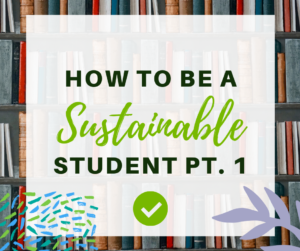The Green Movement, an initiative formed to encourage environmentally-conscious practices in order to boost global environmental health, saw a significant gain in traction as environmentalism rose to prominence in the 1960s, engaging the up-and-coming generations in an effort to reduce pollution and protect the ecosystem’s most vulnerable members.
This movement has since developed into a powerful synergy of broad generational and cultural backgrounds to produce an even more cogent message. This message promotes the concept of a “zero-waste” approach, a philosophy aimed to curtail excess waste through consumption reduction and reengineering of products to be utilized for functional reuse.
With the popularity of zero-waste on the rise, many industries have capitalized on increased environmental consciousness with attractive marketing strategies. Products such as metal straws, biobased clothing detergent, and stainless steel water bottles have infiltrated our Instagram feeds and shopping trips, making these eco-friendly adjustments as palatable and seamless as possible.
In an article for University Wire, Gabrielle Pente described her interest in taking advantage of the environmentally-conscious resources but struggled to adjust to the new financial burden and the lack of accessibility within her community. Despite these difficulties, she made other eco-friendly adjustments in other aspects of her life. She began composting and shopping local businesses and farmer’s markets. “This practice as a consumer,” says Pente, “supports a circular economy system where we recycle and reuse,” in lieu of the alternative “linear {system}, where we produce, use, and dispose of resources.”
In a time of bridging unfortunate economic gaps, there is still much work to be done in making environmentally conscious pursuits financially possible for everyone. In the meantime, there are many affordable options in which you can contribute to the zero-waste movement. You have the power to make a difference through methods such as Pente’s use of compost and support of locally grown foods. The most natural approach, however, is making a difference through resourcefulness. Resourcefulness can be used to promote the zero-waste movement by reusing and repurposing items that would otherwise end up in a landfill.
To learn more about zero-waste, visit: https://www.goingzerowaste.com/
Sources:
https://nationalinterest.org/feature/the-green-movement-still-terrifies-irans-leaders-12224
“What Is the Zero-Waste Movement?” Planet Aid, Inc., www.planetaid.org/blog/what-is-the-zero-waste-movement.
Rente, Gabrielle. “Greener Living: Understanding the Zero Waste Movement.” University Wire, 29 Aug 2019. sirsissuesresearcher, explore.proquest.com/sirsissuesresearcher/document/2305317418?accountid=66339.
“What Is Zero Waste?” Ecocycle.org, www.ecocycle.org/zerowaste.


